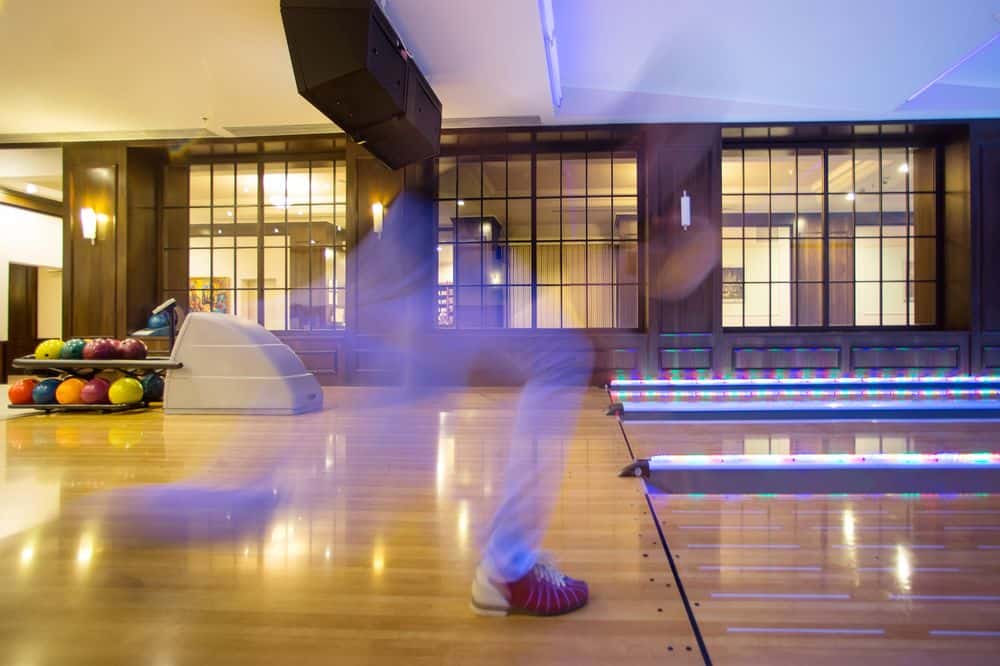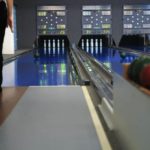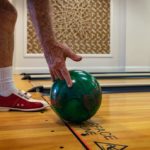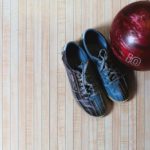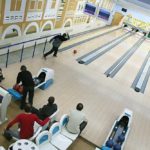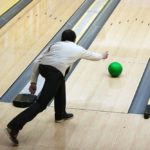Bowling is a sport enjoyed by millions around the world. It’s an excellent way to socialize, stay active, and improve hand-eye coordination. However, many bowlers struggle with getting enough ball speed to knock down all the pins consistently. Fortunately, there are several techniques you can use to increase your ball speed and take your game to the next level.
Improving your approach for better ball speed is essential in bowling. The approach is how you move towards the foul line before releasing the ball. Many factors can affect your approach, such as footwork and timing. Adjusting these elements can help you achieve more significant momentum and generate greater force when throwing the ball.
In this article, we will explore various methods that will allow you to get more ball speed in bowling and become a more accomplished bowler overall.
Improving Your Approach for Better Ball Speed
Enhancing the effectiveness of one’s approach is a key factor in optimizing the kinetic energy transfer from the body to the ball, resulting in increased velocity and improved performance. To achieve this, bowlers need to focus on two crucial elements: footwork drills and arm swing mechanics.
Footwork drills are an essential aspect of any bowler’s training regimen. The proper footwork technique ensures that bowlers maintain balance and power throughout their delivery. One such drill involves taking small steps while keeping your feet shoulder-width apart. This exercise helps improve a player’s coordination, which can lead to better accuracy and increased speed when combined with other techniques.
In addition to footwork drills, mastering the mechanics of arm swing is also crucial for achieving higher ball speeds in bowling. Bowlers should work on developing a smooth and consistent motion while maintaining proper timing between their steps, release point, and follow-through. By doing so, players can increase their arm speed without sacrificing accuracy or control over their shots.
With continuous practice of these techniques over time, bowlers can enhance their approach to deliver more powerful throws that result in higher scores on the scoreboard.
Adjusting Your Ball Weight and Grip for Maximum Speed
Optimizing ball weight and grip can significantly impact the kinetic energy transfer and release of the ball, potentially leading to a more forceful and dynamic delivery. Choosing the right ball weight is crucial, as it affects not only speed but also accuracy. A general rule of thumb is to choose a ball that is 10% of your body weight. However, this can vary depending on your strength level and overall fitness.
In addition to choosing the right ball weight, hand positioning and wrist strength are important factors in achieving maximum ball speed. The proper hand positioning allows for a consistent release and follow-through while reducing unnecessary stress on the fingers and wrist. Strengthening your wrist through exercises such as wrist curls and reverse wrist curls can increase power in your delivery.
Choosing the right fingertip inserts can also help improve grip and control during delivery. Inserts come in different sizes, shapes, and textures to cater to individual preferences. It’s important to experiment with different options until you find what works best for you.
Overall, optimizing your ball weight, hand positioning, wrist strength, and finger inserts can ultimately lead to improved ball speed and performance on the lanes.
Practicing Proper Release Techniques
Mastering proper release techniques is crucial in achieving consistent and accurate throws, as it involves the coordination of various body parts and muscle groups to achieve a smooth, controlled motion.
Hand positioning plays a significant role in achieving optimal ball speed as it influences the direction and angle of the ball’s trajectory. A relaxed hand position with fingers evenly spaced apart can help generate more power and prevent excessive spin on the ball.
Wrist strength is also an important factor to consider when looking to improve bowling ball speed. A strong wrist enables bowlers to maintain control over their shots while generating maximum force behind each throw. One way to strengthen your wrist is by using a wrist trainer or performing exercises that target specific muscles in your forearm.
Exploring other factors that contribute to improving bowling ball speed include developing a consistent approach and follow-through, maintaining good posture throughout the shot, and practicing regularly with different types of balls.
By implementing these techniques into your practice routine, you can gradually develop greater accuracy and precision while increasing your overall throwing power. Remember that mastering proper release techniques takes time and patience but with persistence, you can achieve great results over time.
Using the Right Bowling Shoes for Improved Performance
The choice of appropriate footwear is a significant factor in improving one’s performance in the sport, akin to how comfortable and durable shoes are necessary for a hiker to traverse challenging terrains with ease.
Bowling shoes are specifically designed with a smooth sole on one foot and a rubberized sole on the other, allowing players to slide and brake effectively. The type of shoe material can also impact performance since it affects traction and flexibility. For instance, leather provides durability but may not be as flexible as synthetic materials.
Shoe selection should also consider the bowler’s individual needs. Custom insoles provide additional benefits, such as personalized fit that enhances comfort and support while playing. These features reduce discomfort or pain that could affect optimal performance during prolonged games or practice sessions.
Furthermore, customized inserts can improve balance by providing extra grip where needed.
In conclusion, choosing the right bowling shoes that suit your individual needs is essential for better ball speed and overall game performance. Players should take into account their personal preferences regarding materials used as well as their specific requirements when selecting custom insoles for added comfort and support.
Investing in high-quality bowling shoes will pay off over time through improved scores and reduced risk of injuries due to improper footwear choices.
Incorporating Strength Training and Conditioning into Your Routine
Incorporating strength training and conditioning into one’s bowling routine is a crucial aspect of improving overall physical fitness and enhancing athletic performance. While bowling may not appear to be physically demanding, it requires a certain level of core stability and upper body strength to generate ball speed and maintain accuracy.
Resistance bands and plyometrics are alternative exercises that can help build the necessary muscle groups for bowling. Resistance bands provide a low-impact way to engage muscles without putting unnecessary strain on joints or risking injury. They come in varying levels of resistance, making them ideal for progressive strength building. Plyometric exercises such as jumping jacks, lunges, and squats can also improve explosive power needed in bowling release movements.
It is important to consult with a professional trainer before incorporating any new exercises into your routine.
Nutrition and hydration play an important role in optimizing your body for bowling performance. Proper nutrition provides the energy needed to sustain long periods of physical activity while hydration ensures that muscles receive adequate blood flow for optimal performance. Eating a balanced diet rich in lean protein, complex carbohydrates, fruits, and vegetables can help you stay energized throughout your game. Additionally, staying hydrated by drinking water throughout the day can help prevent muscle cramps that could negatively impact your game.
By incorporating these practices into your routine alongside resistance band and plyometric exercises, you can enhance your overall fitness level and achieve greater ball speed on the lanes.
Conclusion
Improving ball speed in bowling requires a combination of physical adjustments and technical skills. Firstly, ensuring proper approach is crucial for achieving maximum ball speed. This involves finding the right balance between stride length and timing to generate momentum that translates into increased velocity.
Next, adjusting ball weight and grip can also impact your performance. A heavier ball may increase momentum, but it could also lead to fatigue or injury if not handled correctly. Finding the right grip is equally important as it influences how effectively you transfer energy from your body to the ball.
Proper release techniques are essential for generating consistent ball speed and accuracy. This includes maintaining a smooth swing, keeping your wrist firm, and releasing the ball at the correct angle.
Using appropriate bowling shoes can also help improve performance by providing stability and traction on the approach.
Incorporating strength training exercises into your routine can help build muscle endurance required for sustaining high-speed throws over an extended period.
According to research conducted by Trackman Bowling, average bowling speeds among professional bowlers range between 16-19 mph with some players exceeding 20 mph. These statistics highlight that achieving higher speeds require dedicated practice and honed skills, which can only be achieved through perseverance and discipline.
Therefore, by adopting a comprehensive approach towards improving technique while focusing on building strength and endurance through regular exercise routines, bowlers can significantly enhance their overall performance in terms of speed and accuracy on the lanes.

